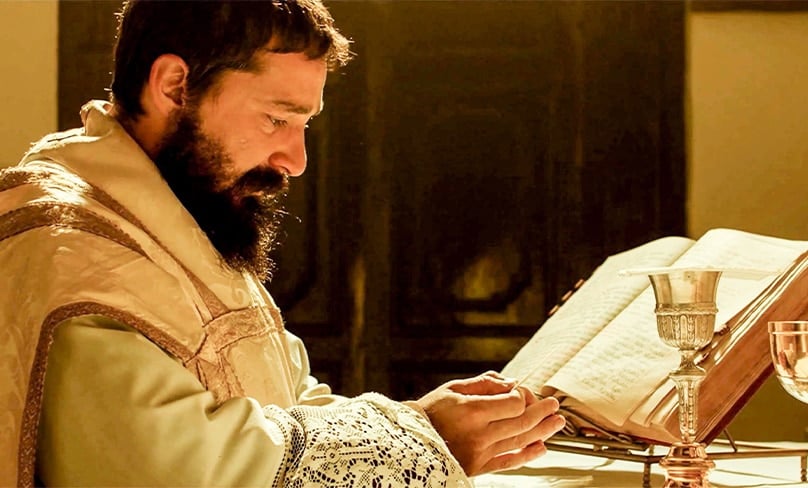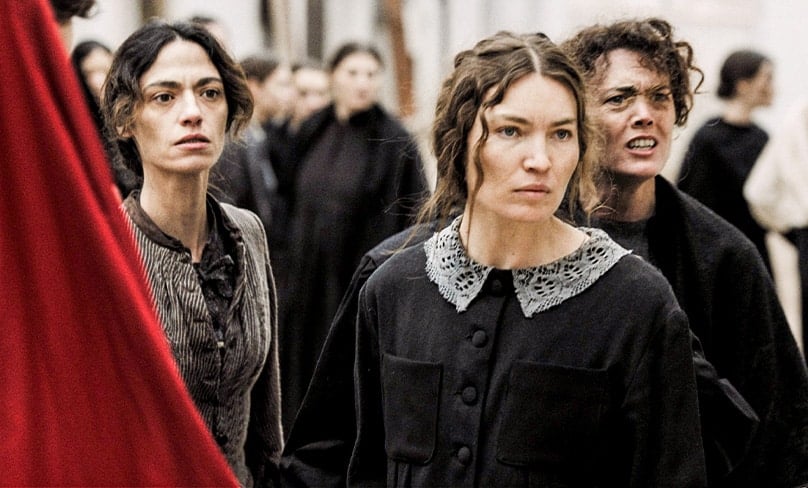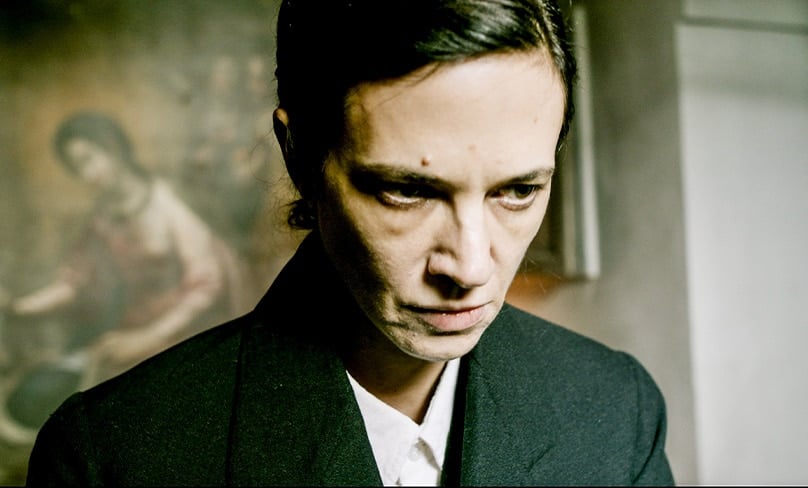
Beloved by millions of Catholics around the world for his great faith and devotion, Pio of Pietrelcina’s life of miracles and humble ministry has been the source of many conversions.
Hollywood Actor Shia LaBeouf recently opened up about his own conversion to Catholicism and how his movie role as Pio led him towards God.
Though his change of heart is clearly miraculous, likely through the intercession of the Italian Saint himself, it is unfortunate that the miracle did not seem to extend itself to the clunky and bizarre film Padre Pio, written and directed by the provocative American director Abel Ferrara.
Set in Southern Italy’s San Giovanni Rotondo at the end of the First World War, the film opens with a long sequence in which returning soldiers are reunited with their families.
“Ultimately, he must face his demons – both literal and figurative – and accept his calling for redemptive suffering as the great evil that plagues his town spreads across the whole world.”
Those that are able are forced back to work under local landowners who use fear and exploitation to maintain order.
Under the threats of unemployment and poverty, many young Italians look to forming unions and voting for their nascent socialist party in the hope of sparking real change.
But with tensions growing between the poor who coalesced around the socialists and the fascists in power, it seems that the upcoming election will be the catalyst for an explosion of violence and unrest.
In this same period, a young Padre Pio from Pietrelcina arrives at the remote Capuchin convent to begin his ministry.

Going about his days in quiet contemplation, Padre Pio attends to the spiritual needs of his small flock who are still largely unaffected by the spread of socialism.
But as the village suffers, so too does the Capuchin monk as he is relentlessly tormented at night by the Devil trying to turn him through intimidation, violence, temptation and self-doubt.
Ultimately, he must face his demons – both literal and figurative – and accept his calling for redemptive suffering as the great evil that plagues his town spreads across the whole world.
Ferrara’s Padre Pio is a strange cinematic experience which offers more in style than in substance, failing as it does to produce a coherent and enjoyable story.
“What’s more puzzling is why writers Ferrara and Maurizio Braucci would create a biographical drama where the title capuchin is no more than a cameo.”
With so much of the film dedicated to the plight of the poor, it’s difficult to see what Pio’s role is in the events that transpire.
The two story lines of conflict – the political and the spiritual – occur in parallel but never actually intersect with one another. This seems undeveloped and poorly scripted. After all, both are about the human response to evil.
What’s more puzzling is why writers Ferrara and Maurizio Braucci would create a biographical drama where the title capuchin is no more than a cameo.
This seems to be at a great disservice to Padre Pio’s astonishing life and to actor Shia LaBeouf, whose recent conversion to Catholicism sees his full commitment to the role.
Disregarding the actor’s American accent, LaBeouf does justice to his portrayal of Pio, particularly in the solemn moments of Holy Mass and the monk’s ministry to the marginalised.
Some of the film’s most compelling shots are of LaBeouf’s Pio reverently consecrating the host in Mass and giving Communion to his small congregation.
Unfortunately, such scenes are few and far between as Ferrara focuses on Pio’s personal torment by the Devil in stylised sequences which without context makes the protagonist seem psychotic and delusional.
This is a critical oversight by the writers as they rely on shocking dialogue and scandalous imagery in order to capture the deviant presence of evil.
“Besides the glimpses of greatness seen in LaBeouf’s Pio, the rest of the cast fall flat and fail to give convincing performances.”
One clear example is when the devil appears to Pio as a naked woman in an extremely graphic and distasteful scene that sees her try to seduce Pio while performing a lewd act.
In another weird instance, Pio hears the confession of a man, played by Italian actress Asia Argento, who confesses to him his attraction to his young daughter.
This revelation, and the choice of an actress to play the man’s role, is confusing in the first instance but also disturbing and seems to have been contrived only to shock the audience.
If the film’s makers had delved into Pio’s rich and remarkable life with a view to communicating this through the script so much more could have been achieved without resorting to bizarre directorial decisions.

Filming on location in Apulia, cinematographer Alessandro Abate’s use of shaky camera does well to realistically capture the unforgiving life of early 20th century Italy where peasants had been tied to the land in poverty and subsistence for centuries.
The dulled, earthy colours and stone wall backdrops add to the depiction of hardship and poverty, though at times odd choices of music and sounds tend to take the audience out of this cruel world.
Besides the glimpses of greatness seen in LaBeouf’s Pio, the rest of the cast fall flat and fail to give convincing performances.
Ferrara’s use of a local cast that struggles with their English lines, not only kills any authenticity but hinders the few strong lines from making any impact whatsoever.
“Padre Pio is definitely not for young children and it would be strongly recommended that those who are new to the faith and this great saint familiarise themselves with his story before attempting to watch it.”
With so few words spoken by LaBeouf and with an Italian cast, it seems an odd choice to write this story using English dialogue.
Padre Pio is definitely not for young children and it would be strongly recommended that those who are new to the faith and this great saint familiarise themselves with his story before attempting to watch it.
For those who do, be assured that the suffering that you may undertake can be redemptive and offered up for those in need in the spirit of Pio.
Padre Pio, which has yet to be rated in Australia, premiered at the 2022 Venice Film Festival and it is currently seeking distribution.
Related Articles:
